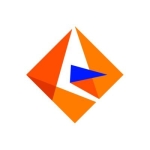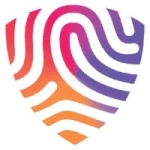As a Microsoft partner, we specialize in selling Microsoft products to our clients. Microsoft Purview serves as a typical data cataloging tool within our data governance projects.
Microsoft Purview offers comprehensive data protection capabilities across multi-cloud and multi-platform environments, including AWS and Google Cloud Platform. When discussing data protection, it's essential to recognize the different facets of Purview solutions. Firstly, there's the data catalog side, which focuses on organizing and managing data assets. Secondly, there's the risk and compliance aspect, which encompasses solutions like data loss prevention, insider risk management, and information protection for data security. Additionally, there are risk and compliance management features such as data lifecycle management, e-discovery, audits, and communication compliance. Microsoft Purview has been working towards integrating these three aspects—data security, data governance, and risk and compliance—into a unified interface which would provide a seamless experience for users to manage all aspects of data protection efficiently.
The ability for Purview to connect with iOS, Mac, and Android devices, as well as data from various SaaS applications, is of utmost importance. Customers prioritize this capability because they aim to safeguard their data regardless of its location—whether on mobile devices, in the cloud, or on computers.
It serves as a connection platform that supports the integration of data from non-Microsoft sources. While its capabilities for connecting with non-Microsoft data sources are continuously improving, there are still some limitations. Presently, Purview can connect with other cloud vendors such as Google Cloud, Amazon, and IBM.
Ensuring native integration of compliance across Azure, Dynamics, and Office 365 is a top priority for Purview. The aim is to consolidate all compliance functionalities into a unified interface, although currently, they remain separate. The ultimate goal is to streamline compliance processes by centralizing them within a single portal.
We use Purview for data loss prevention.
It hasn't yet streamlined the integration of solutions we interact with, as they remain separate. However, once the unification of data governance, data security, and risk compliance functionalities into one portal is fully implemented, it will likely reduce the need for multiple interactions. Currently, we're still navigating through different interfaces and portals to achieve our goals. So, as of now, the solutions remain separate, but there's potential for improvement in the future.
Purview has enhanced our visibility into our data estate, especially through the democratization of data via the data catalog. By surfacing our data assets and making them accessible throughout the organization, we've achieved better visibility overall. However, it's crucial to note that successful data governance requires more than just technology—it also involves having the right teams, processes, and policies in place. Therefore, by ensuring that all three components of data governance are aligned and well-managed, leveraging Purview's data catalog can significantly improve visibility into our assets.
There are AI components utilized for classification purposes, particularly in identifying names, such as people's first names and locations like cities. Additionally, there's deeper integration with MDM partners like Profisee and Tamr, who leverage Azure OpenAI for this purpose. However, even without these third-party vendors, within the data catalog or data map, classification relies on machine learning to identify and surface sensitive information effectively. AI has a significant impact on the quality of insights in Purview. It automatically classifies sensitive assets during scanning, which effectively reduces manual effort and ensures thorough coverage of sensitive information within the data catalog.
The ability to demonstrate compliance in real-time is facilitated by a dedicated solution known as Compliance Manager. This specific Purview solution falls under the category of risk and compliance, providing the necessary tools to showcase compliance status effectively.
Purview, particularly the Compliance Manager, has assisted us in enhancing compliance with regulatory requirements. With Purview Compliance Manager, it identifies areas where compliance may be lacking and provides actionable steps to achieve compliance. This tool facilitates easier discussions with compliance stakeholders and ensures alignment on necessary actions.
It has contributed to reducing the time required to address insider threats through its integration with Microsoft Defender for Endpoint. This integration includes a specific feature known as Insider Risk Management, which enables proactive detection of and alerts for suspicious or malicious activities.
It has helped save both time and money. One particular feature is called Data Sharing. Its primary aim is to minimize data duplication. This feature allows users to share data internally and externally without physically moving the data itself. Instead of creating additional copies of data as attachments or sending them via email, users can share data directly from its existing location. This reduces the need for storing multiple copies of the same data, ultimately saving storage space and associated costs.
It has enhanced our ability to maintain compliance by integrating Purview with Microsoft Sentinel. This integration enables the creation and sending of alerts, allowing us to proactively address sensitive information as it enters our data catalog.
It is designed to seamlessly connect to various data sources, which is particularly beneficial for our customers who primarily use Microsoft technologies. These sources include Azure Data Lake Storage Gen2, Synapse Workspace, and other platforms that Purview natively supports. Data cataloging is a fundamental feature of Purview, allowing users to organize and manage their data assets effectively. It also offers powerful lineage capabilities, enabling users to trace data from its source systems to the reporting layer. While there are some limitations in supporting end-to-end lineage for certain assets, Purview excels in automating lineage for supported assets such as Azure Data Factory and Synapse pipelines. Another valuable feature of Purview is its glossary terms functionality. Recently, we completed a project for a customer who was migrating their data dictionary from SharePoint to Purview's data catalog. This migration allowed them to seamlessly connect glossary terms to their ingested data assets, enhancing their data management and governance capabilities significantly.
Data quality has been a highly requested feature among customers. While it was initially scheduled for release in December last year, I anticipate that this feature will be available soon this year.
I suppose that with the integration of all three solutions—data security, data governance, and risk and compliance—there will be a clearer direction regarding changes on the people side of things. Like any other changes, this integration will necessitate new responsibilities, processes, and policies. It's essential to outline the expected changes on the people side, such as identifying impacted personas and defining their new responsibilities.
I have been working with it for three years.
I've encountered some slight lag, although Microsoft boasts a 99.9% SLA guaranteeing availability. This means there's an estimated downtime of around eight hours per year, but overall, disruptions are minimal.
Scalability has become more streamlined with recent updates. Previously, selecting a data map capacity was necessary when creating the data catalog, but now scalability has been improved. This means reduced overhead and eliminates the need for manual adjustment, making it easier to manage.
I've reached out to tech support numerous times. Interacting with them is always a positive experience because they consistently offer prompt assistance and valuable insights. It's particularly beneficial when dealing with new features or issues that many clients may not have encountered yet. They consistently deliver the assistance I need promptly and effectively. In cases where immediate answers are not available, I escalate the issue until I connect with the right individuals who can provide the necessary assistance. I would rate it ten out of ten.
Before transitioning to Purview, I was using the older version, which was Data Catalog.
The initial setup of Purview is straightforward, requiring just a few clicks to create an Azure account on the Purview portal. However, the complexity arises in setting it up properly, especially considering the Cloud Adoption Framework and the Analytics framework. While the setup can initially be simple, achieving scalability requires certain skills and responsibilities within the organization to ensure it's done properly. Scaling the architecture involves creating new data landing zones or subscriptions for different data workloads, such as Azure Machine Learning Workspace for data science teams while maintaining organizational governance and best practices. We are the ones responsible for assisting people in implementing Purview.
Typically, it requires at least two individuals from our team to deploy Purview, though sometimes up to three, depending on their skill sets. One essential role is a data governance lead responsible for overseeing tasks related to the data catalog, such as setting up the collection hierarchy and defining data domains. On the Azure infrastructure side, either a versatile solution architect or an Azure architect is needed to define the data management landing zone and data landing zone. This individual may also take on the role of a DevOps engineer to manage CI/CD processes for resource deployment and integration. Additionally, a data engineer is required to facilitate the movement of data assets from sources to the data warehouse. Lastly, a fabric administrator assists with necessary tenant settings. However, at a minimum, a solution architect and a data governance lead are essential, with the solution architect often taking on multiple roles.
The return on investment involves significant effort initially, but as organizations mature in their data governance practices, they begin to reap the benefits. These benefits include improved data quality, enhanced visibility of data assets, and increased compliance.
Currently, the licensing differs for the governance side compared to the risk and compliance side. On the governance side, the charges are based on the usage of Purview, including the data map, data catalog, and scanning and classification jobs. However, on the risk and compliance side, it's based on licensing, specifically the E5 license, to access the risk and security compliance features. As of now, the pricing structures remain separate. Improvements in providing clearer information on any pricing changes as these three solutions are unified would be beneficial.
The data quality is a top priority for clients and customers, and while it's expected to be available soon, there are a couple of reasons why there's a slight drawback. Firstly, the rebranding and renaming have confused customers. Although the move towards unifying everything into a single portal is a positive step, it has led to some customer confusion. Providing clearer guidance and communication about these changes and their associated responsibilities will be essential moving forward. Additionally, recent changes in features, such as the replacement of classification with sensitive information types in Compliance Manager, have shifted certain responsibilities from data governance leads to compliance or security teams. While this change impacts customers already using classification rules, it signifies a broader shift in responsibilities. Furthermore, the integration of Purview into Fabric is another aspect that requires better communication, likely due to upcoming changes and features. It's expected that after the unification of tools and features in the unified portal, there will be more emphasis on Fabric integration. Currently, details about this integration have been limited, but this is likely to change with upcoming releases. Overall, I would rate it seven out of ten.














